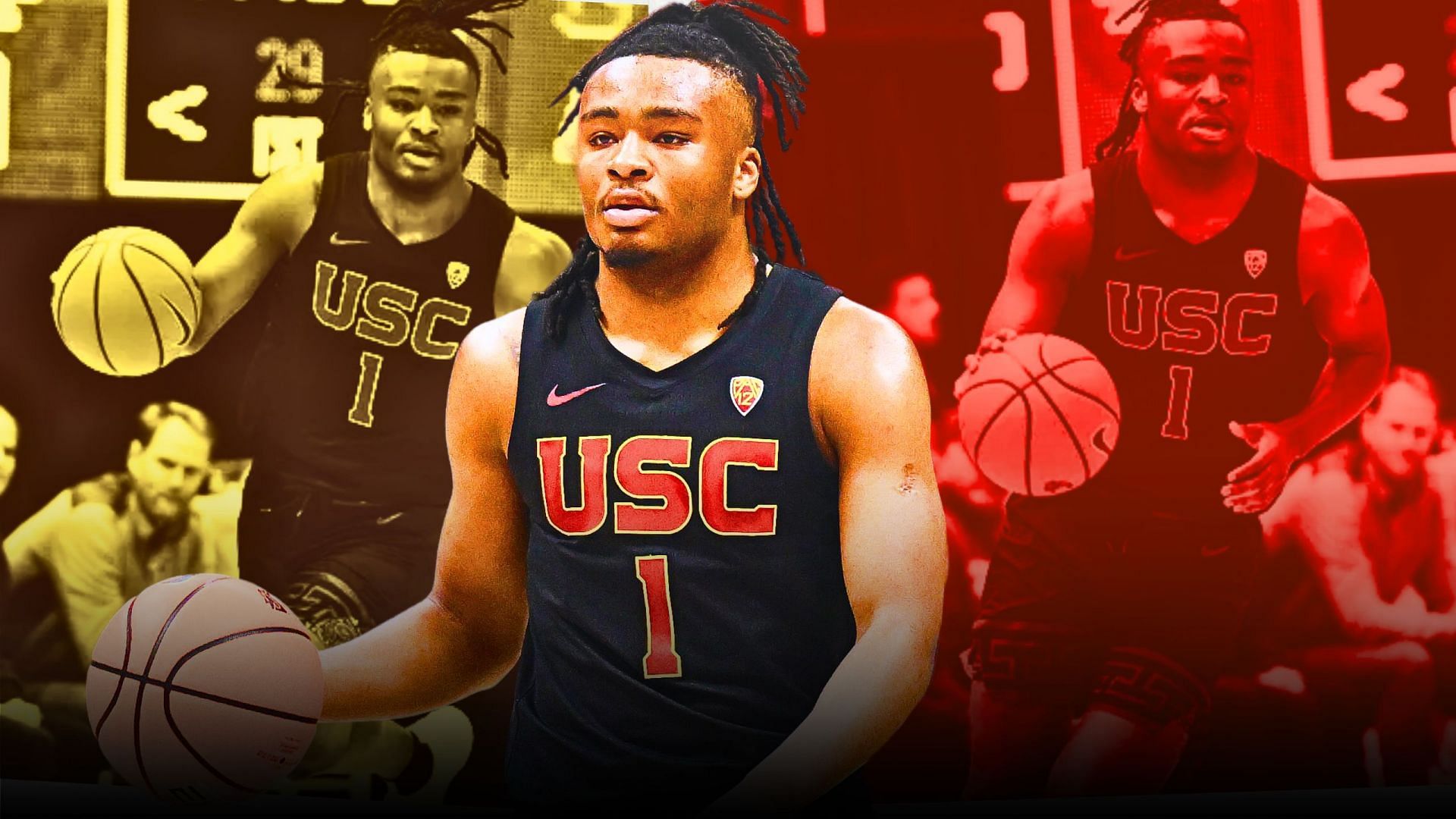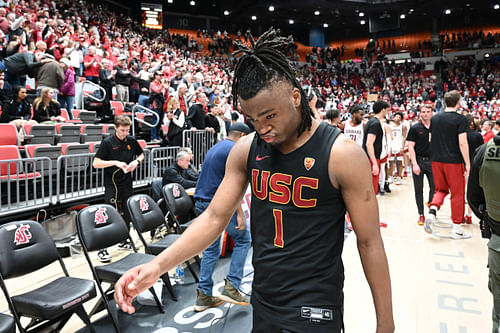
Does Isaiah Collier stand up to Devin Booker, Jalen Brunson comparisons? An in-depth scouting report
Most NBA drafts feature at least one guard who slips through cracks far too loose for their talent. Whether it’s Tyrese Maxey, Jalen Brunson, Devin Booker, or Donovan Mitchell, the league underrates talented initiator prospects in the draft. In 2024, USC’s Isaiah Collier is that guard, who teams will kick themselves for passing on.
According to the Rookie Scale consensus board, Collier ranks 15th. He entered the season as a top-five high-school recruit who struggled out of the gate. By the end of his freshman season, Collier slashed 16.3-4.3-2.9 on 56.7% true shooting. Scouts seem concerned by Collier’s shooting struggles, turnovers, and defense. These are all common problems for elite young guards and shouldn’t push Collier as far down the board as he’s gone.
Similar to the case for Nikola Topic, Collier’s elite downhill threat fueled by his burst and strength beget true primary initiator upside. Though the floor might be lower than some other prospects, Collier’s ability to generate paint touches and create for himself and others is invaluable. He generated 5.2 half-court rim attempts per 40 minutes this season finishing a solid 56.4% of them. Collier shouldered an immense offensive load, finishing with a huge 30.2% usage rate.
Nobody in the draft creates advantages like Isaiah Collier can. His burst and strength overwhelm even older defenders, evidenced by his absurd 49.7 free throw rate. When Collier can’t win off of the dribble, he’ll take defenders down into the post, winning with craft and his handle. While his touch isn’t elite and Collier doesn’t sky above the rim, he has enough touch to score in the paint like the NBA’s elite drivers. Most NBA stars pair overwhelming strength and physicality and Collier fits that bill.
Like many young guards, Collier struggles to consistently score in the mid-range, often playing too fast for his own good. When Collier creates advantages downhill, he denies the intermediate option (understandably given his success in college). In the NBA, Collier must develop counters and slow down his handle. There’s immense upside, especially putting defenders in jail given his massive frame. He can thrive playing off of two feet in the lane, asserting himself physically.
Isaiah Collier scouting report: Sub-par number but high upside
Collier’s shooting projection is contentious — he shot 33.8% from deep on 5.7 attempts per 100, hitting 67.3% of his free throws. Those numbers aren’t remarkable by any means, but he profiles similarly to prospects like John Wall, De’Aaron Fox, and other shaky shooting college guards.
Shooting off of the dribble will be a major swing for Collier; he hit just 29.4% of his 34 off-dribble threes this past season. If Collier forces defenders to play over his ball screens, his downhill slashing will be lethal. If not, he might not have the scoring gravity to maximize his special traits. Collier shot an impressive 37% on a small sample of catch-and-shoot jumpers (13-35), adding optimism to his off-ball game
Collier’s playmaking upside is elite to add to his shot creation. Though many have crucified his high turnover rate (21.1%), most young high-volume passers cough the ball up. John Wall, Ja Morant, Cade Cunningham, Scottie Barnes, Fox and Trae Young among others all turned the ball over at a rate above 20%.
He’ll drive recklessly and throw passes he shouldn’t. Those turnovers must improve. Collier passes with audacity and high-end vision. The best passers in the league are all risk-takers and Collier fits, trying tight-window, NBA point guard-level reads. Though some of these passes end up as turnovers, his passing tools are clear.
More than most guards in this class, Collier weaves himself through defenders in the pick-and-roll, creating passing opportunities with elite vision, manipulation and anticipation. Like elite NFL QB prospects, Collier’s creation out of structure fits with other elite guard prospects.
Isaiah Collier's defense raises big question marks
Defensively, Collier shares the inconsistencies of most teenagers. He’ll fall out of position and swipe at the ball when he shouldn’t. Collier isn’t a positively impactful defender right now, but the majority of high-usage teenage guards aren’t. Critically, Collier’s physical tools and flashes indicate a real defensive upside.
Elite strength and lateral burst help Collier hound ballhandlers, cutting them off and mirroring them at an NBA level. He must improve his positioning and technique and rely less on his tools and more on positioning. Collier’s stiffness changing directions can hamper his screen navigation, but his incredible core and lower body strength remedies that to an extent. He’s an instinctual playmaker when locked in, evidenced by his 2.9% steal rate.
Final thoughts on Isaiah Collier: Why does his upside mean so much?
USC’s offense orbited around Collier, who carried a massive creation burden on an offensively challenged roster. Every draft prospect will benefit from increased spacing and NBA principles but few will feel that change as much as Collier. To maximize his potential, Collier’s future team must develop his off-ball game, weaponizing his elite horizontal explosion as a side-to-side mover more than USC ever did. Dribble handoffs and flip action will move Collier downhill, rendering his athletic tools more effective than in college.
For projecting Collier’s NBA ceiling, it’s critical to decipher which of his weaknesses are inherent and which are a product of youth and situation. Collier’s vertical explosion and wingspan will always plague him, but his defensive and turnover struggles will not.

If Collier’s three-pointer proves reliable He’ll be a star. Collier won’t need an elite jumper to draw defenses in. As long as defenses respect him enough to go over screens and close out hard, Collier’s driving will flourish.
In a draft devoid of high-end star bets, Collier should be a top-five pick. His floor might sit lower than prospects like Reed Sheppard, Jared McCain, and Devin Carter, but picking at the top of drafts is a star-hunting game. If Collier hits his ceiling, his elite driving creation and playmaking could have him competing for All-Star games on a yearly basis. Teams like Washington, San Antonio, and Utah that lack star guard initiators should all swing on Collier’s potential.